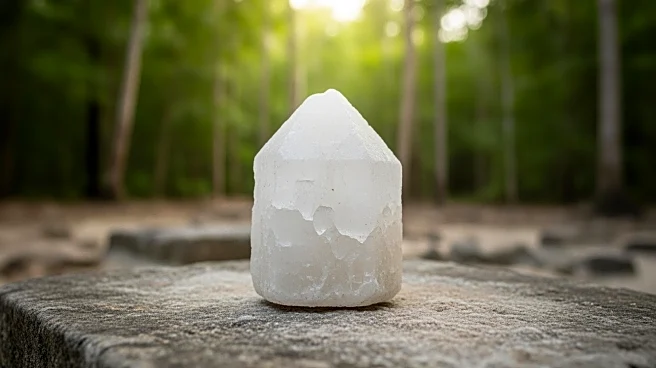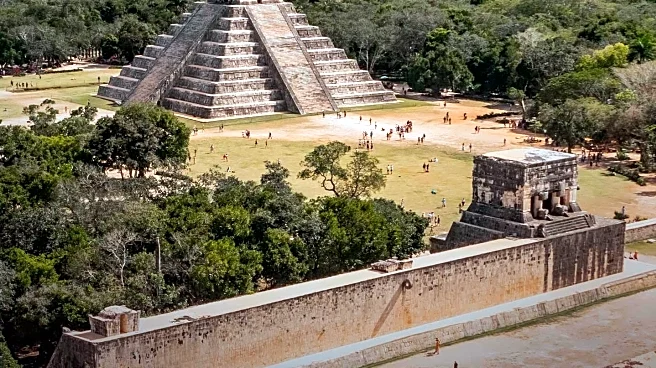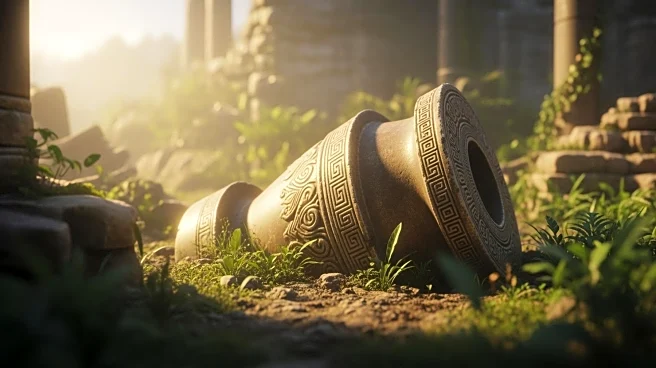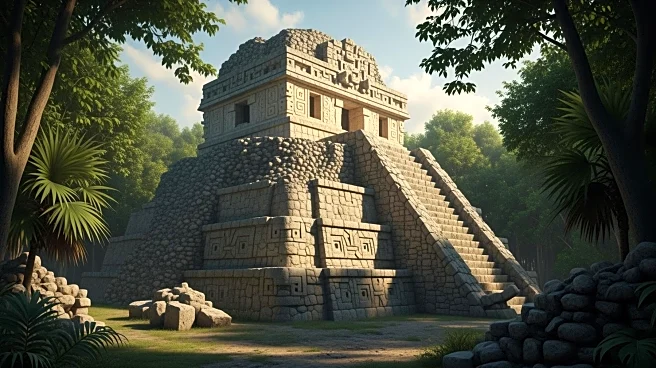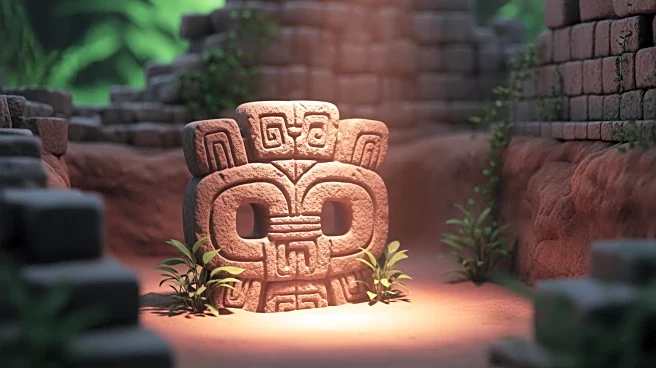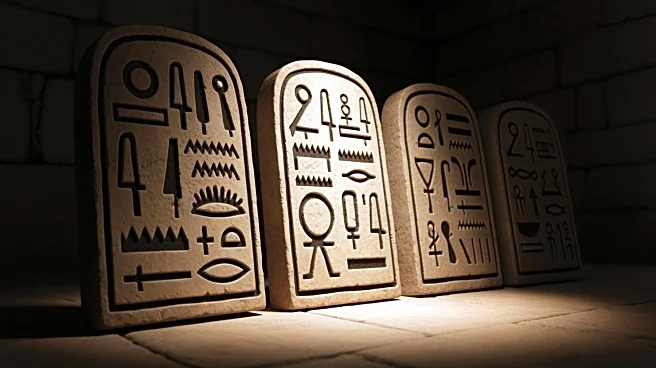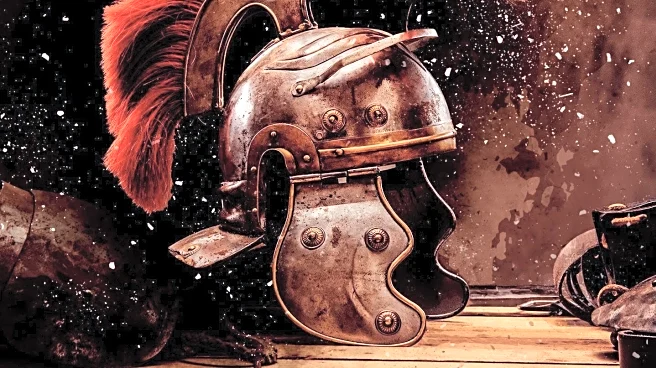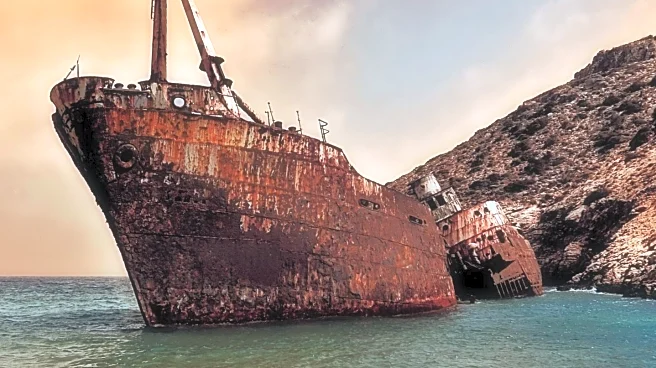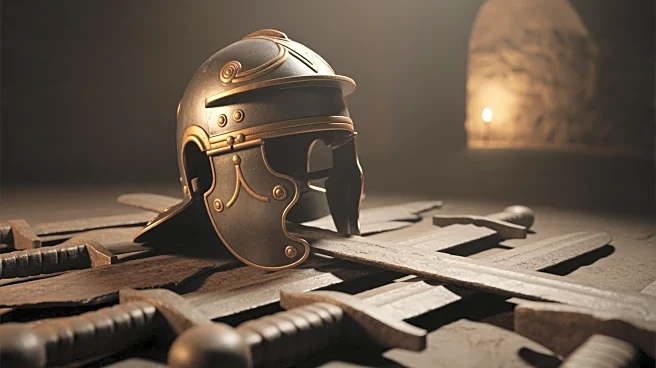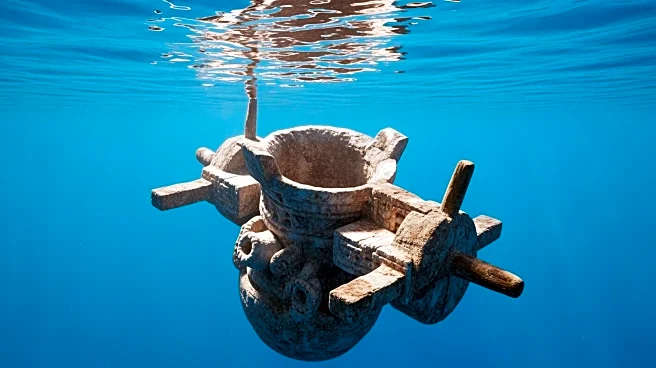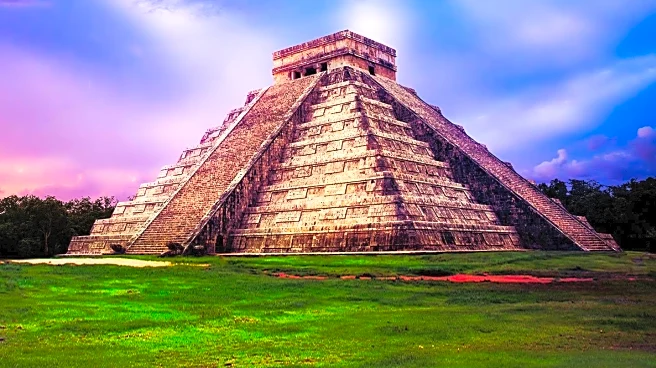What's Happening?
Archaeologists have uncovered a Late Classic Maya residential compound preserved underwater in Belize's Punta Ycacos Lagoon. The site, known as Cho-ok Ayin, features 56 hardwood posts and three palmetto-palm
posts, preserved due to the anaerobic conditions created by mangrove peat deposits. The compound, dating from AD 550 to 800, specialized in salt production, utilizing saline-rich waters and clay funnels for brine enrichment. The discovery highlights the advanced trade networks of the Maya, evidenced by the presence of Belize Red pottery and obsidian from Guatemala.
Why It's Important?
This discovery provides significant insights into the Maya civilization's economic activities and trade networks. The preservation of wooden structures offers a rare glimpse into the architectural practices of the Maya, which are typically lost to decomposition. The findings challenge conventional archaeological methods that often overlook such 'invisible sites,' potentially leading to underestimations of population sizes and economic activities. The preserved site underscores the importance of salt production in Maya trade, linking regions across Mesoamerica.
What's Next?
Further analysis of the site may reveal more about the daily lives and economic practices of the Maya. Archaeologists could explore similar underwater sites to uncover additional 'invisible' settlements, potentially reshaping understanding of Maya civilization. The study may prompt a reevaluation of archaeological techniques, emphasizing the need to consider non-traditional sites in population and economic assessments.
Beyond the Headlines
The discovery raises questions about the sustainability and environmental impact of ancient salt production methods. It also highlights the role of natural preservation conditions in archaeological research, offering lessons for modern conservation efforts. The site may provide insights into the cultural significance of salt in Maya society, influencing social and economic structures.
